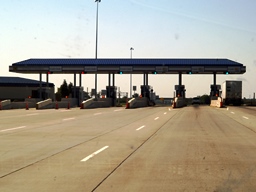 Who doesn’t enjoy a good campaign commercial? With politicians lambasting their opponents, blaming them for the recession, mortgage failure, tax crisis, Midwest drought and McDonald’s taking away the McRib sandwich (okay, those last two are a bit facetious – obviously no one controls the weather), what’s not to love?
Who doesn’t enjoy a good campaign commercial? With politicians lambasting their opponents, blaming them for the recession, mortgage failure, tax crisis, Midwest drought and McDonald’s taking away the McRib sandwich (okay, those last two are a bit facetious – obviously no one controls the weather), what’s not to love?
And no doubt you’re already saturated with political campaigns. “How can this be?,” you proclaim. “It’s only August!”
You are not wrong in your exasperation. The sheer number of television campaign advertisements shown so far this year is shocking (with three months to go before the election, even) and the amount of money spent by candidates and Super PACs is astounding.
Think you’ve had enough? Be glad you don’t live in Ohio. Or Florida. Or North Carolina. The money spent on the presidential election alone in this cycle has been $37.2 million in Ohio on TV ads; $36.3 million in Florida; and $20.4 million in North Carolina.
In fact, across nine “battleground” states (the three listed, along with Nevada, Colorado, Iowa, Virginia, Pennsylvania and New Hampshire), the presidential campaigns and Super PACs have spent $174 million on television spots alone. And that amount was just for nine states through the beginning of July.
Let me put that into perspective: According to ESPN, in 2012 the average cost for a 30-second television ad during the Super Bowl was $3.5 million. That $174 million spent so far on presidential advertisements in nine states equals about 50 Super Bowl commercials. (Unfortunately, politicians don’t include the Budweiser Clydesdales or barking dogs dressed as "Star Wars" characters in their ads.)
It’s not just which states you are in, but also the networks you watch. For instance, if you are a regular Fox News viewer, chances are you’ve seen a number of the 479,055 advertisements that have aired on the network thus far. CNN is next with 191,027 campaign ads and another news network, MSNBC, aired 75,207, according to NCC Media.
You can’t really avoid it by changing the channel, either. ESPN, TNT, USA, Lifetime, HGTV, and the Weather Channel, to name a few, top the list of number of ads aired this election cycle. Even Food Network viewers can’t escape the barrage (33,118 ads so far interspersed between Paula Deen and Bobby Flay).
It’s safe to say that as the election draws closer, we will see even more of these ads. But, are they effective? Americans that are planning to vote most likely have decided which candidate they will support – but there are always individuals that can be wooed at the last minute.
One thing is for sure, however: The broadcast television industry must really love election time.
 Federal highway funding is running low. Nothing new there. The Indiana Chamber, and many others, have called for long-term solutions from Washington instead of short-term fixes that simply extend the uncertainty.
Federal highway funding is running low. Nothing new there. The Indiana Chamber, and many others, have called for long-term solutions from Washington instead of short-term fixes that simply extend the uncertainty.
 Reactions were varied recently when the company operating the Indiana Toll Road filed for bankruptcy. A researcher at the Harvard Kennedy School emphasizes the positive aspects of how that deal was structured and focuses on the continually evolving role of each party in such an agreement.
Reactions were varied recently when the company operating the Indiana Toll Road filed for bankruptcy. A researcher at the Harvard Kennedy School emphasizes the positive aspects of how that deal was structured and focuses on the continually evolving role of each party in such an agreement.  Usually the only time you see three red X’s in a row is if you’re watching "Family Feud" and the family up to bat just struck out.
Usually the only time you see three red X’s in a row is if you’re watching "Family Feud" and the family up to bat just struck out.
 Combined television advertising spending in the presidential race is on pace to top $1 billion by Election Day. And while you might think you’re seeing more than a few attacks and the occasional "I have an idea" spot here in Hoosierland, we’re actually barely a blip on the radar screen.
Combined television advertising spending in the presidential race is on pace to top $1 billion by Election Day. And while you might think you’re seeing more than a few attacks and the occasional "I have an idea" spot here in Hoosierland, we’re actually barely a blip on the radar screen..jpg) Republicans are vying hard to capture 51 seats in the U.S. Senate. Likely holding onto their House majority, a Senate victory would prove incredibly useful for them — even moreso if Mitt Romney were to win the Presidency, in what remains a very tight contest. Indiana is now a focal point as Richard Mourdock and Joe Donnelly are also in a remarkably close race. Brandon J. Gaylord of the
Republicans are vying hard to capture 51 seats in the U.S. Senate. Likely holding onto their House majority, a Senate victory would prove incredibly useful for them — even moreso if Mitt Romney were to win the Presidency, in what remains a very tight contest. Indiana is now a focal point as Richard Mourdock and Joe Donnelly are also in a remarkably close race. Brandon J. Gaylord of the  Who doesn’t enjoy a good campaign commercial? With politicians lambasting their opponents, blaming them for the recession, mortgage failure, tax crisis, Midwest drought and McDonald’s taking away the McRib sandwich (okay, those last two are a bit facetious – obviously no one controls the weather), what’s not to love?
Who doesn’t enjoy a good campaign commercial? With politicians lambasting their opponents, blaming them for the recession, mortgage failure, tax crisis, Midwest drought and McDonald’s taking away the McRib sandwich (okay, those last two are a bit facetious – obviously no one controls the weather), what’s not to love? The Medicaid expansion decision for each state is one of several critical aspects of the Affordable Care Act, which was recently deemed Constitutional by the Supreme Court. Although federal dollars are at stake, it’s not a given that states (including Indiana) will agree to the changes to the program for low-income residents.
The Medicaid expansion decision for each state is one of several critical aspects of the Affordable Care Act, which was recently deemed Constitutional by the Supreme Court. Although federal dollars are at stake, it’s not a given that states (including Indiana) will agree to the changes to the program for low-income residents.  There are approximately 3,000 counties in the United States. The "approximate" comes from whether you include Louisiana parishes and Alaska boroughs in that total. Delaware has the fewest counties (3) and Texas the most (254).
There are approximately 3,000 counties in the United States. The "approximate" comes from whether you include Louisiana parishes and Alaska boroughs in that total. Delaware has the fewest counties (3) and Texas the most (254). When you read as many reports, studies, analyses and similar materials as I do, it’s difficult to be shocked by many of the facts that emerge. But check out these numbers from the Pew Center on the States regarding voter registration:
When you read as many reports, studies, analyses and similar materials as I do, it’s difficult to be shocked by many of the facts that emerge. But check out these numbers from the Pew Center on the States regarding voter registration: